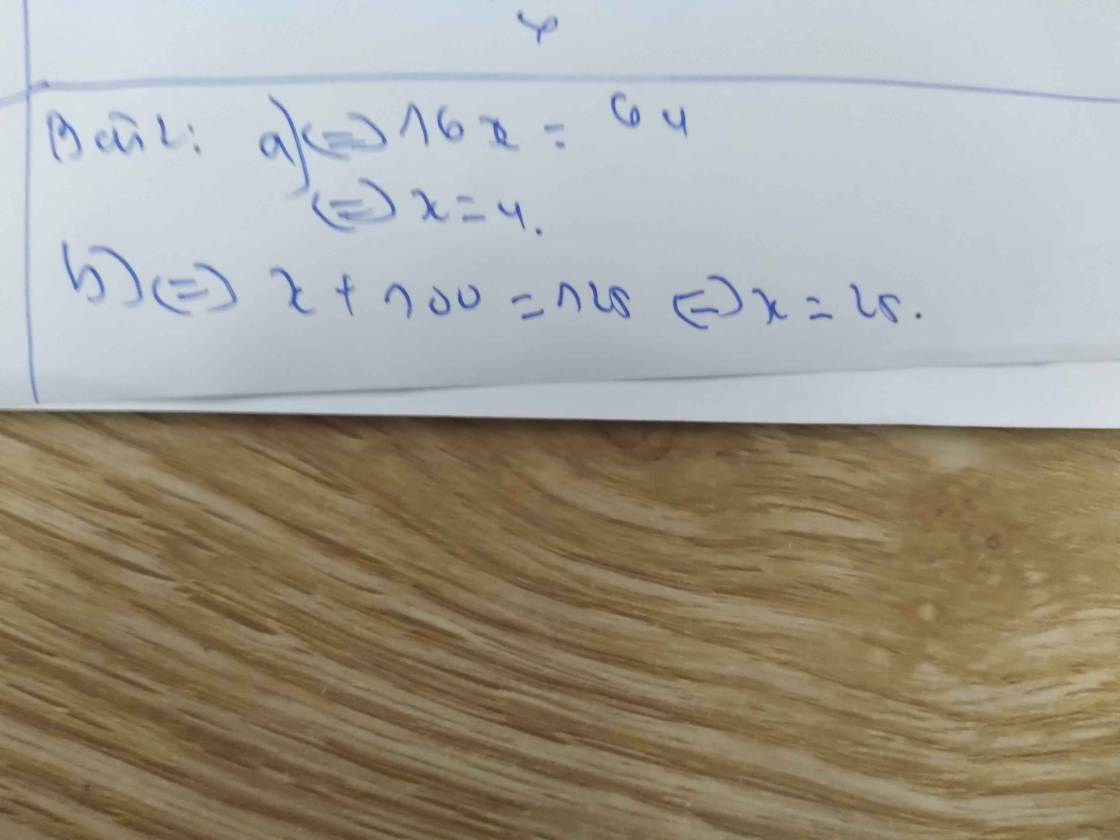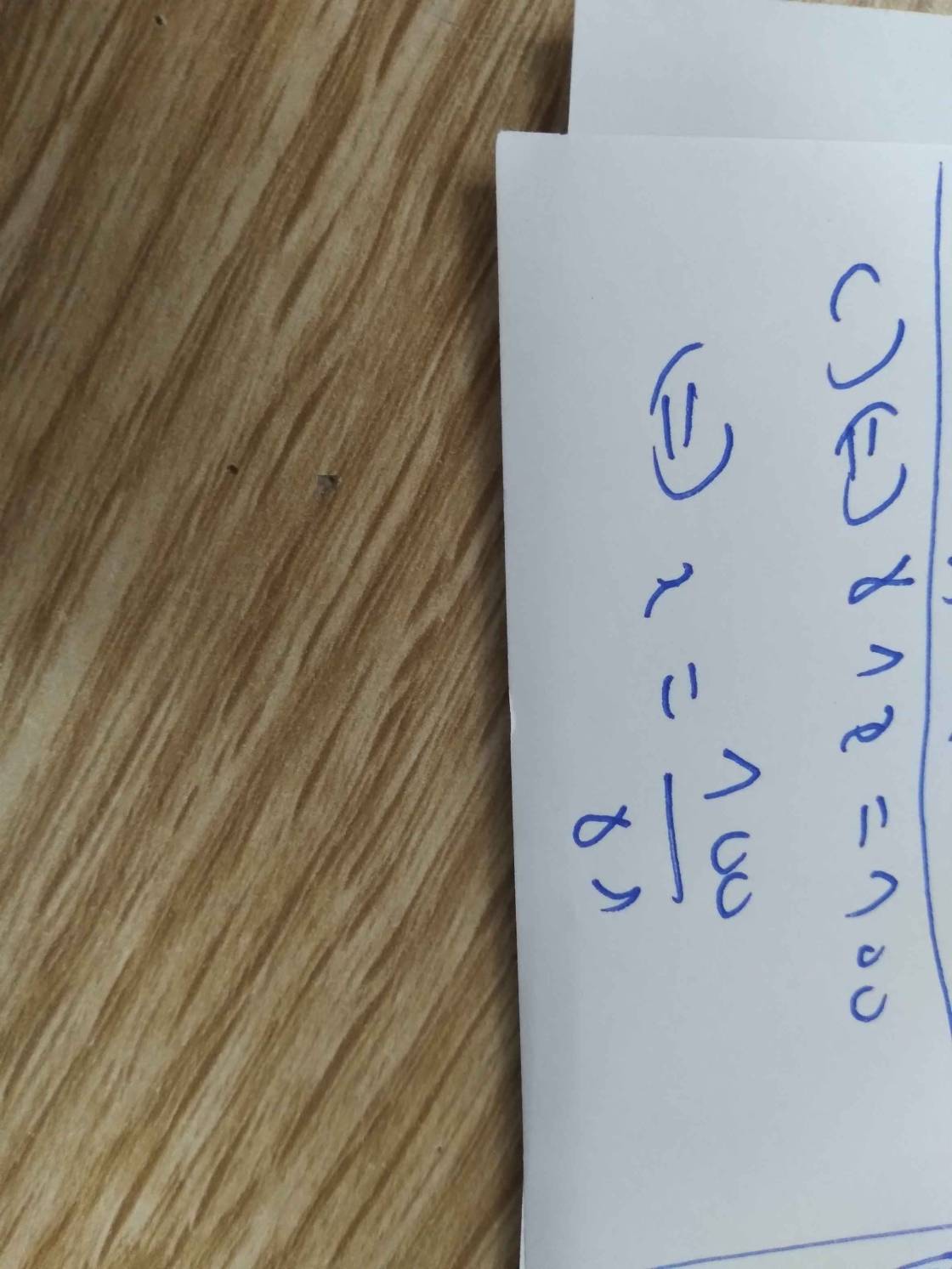Tìm a; b; c; d thoả mãn a x ab x acd = 2004
Hãy nhập câu hỏi của bạn vào đây, nếu là tài khoản VIP, bạn sẽ được ưu tiên trả lời.


ĐKXĐ: \(x\ge0;x\ne4\)
\(A=\dfrac{x}{\left(\sqrt{x}-2\right)\left(\sqrt{x}+2\right)}+\dfrac{\sqrt{x}+2}{\left(\sqrt{x}+2\right)\left(\sqrt{x}-2\right)}+\dfrac{\sqrt{x}-2}{\left(\sqrt{x}-2\right)\left(\sqrt{x}+2\right)}\)
\(=\dfrac{x+2\sqrt{x}}{\left(\sqrt{x}-2\right)\left(\sqrt{x}+2\right)}=\dfrac{\sqrt{x}\left(\sqrt{x}+2\right)}{\left(\sqrt{x}-2\right)\left(\sqrt{x}+2\right)}=\dfrac{\sqrt{x}}{\sqrt{x}-2}\)
b. \(x=36\Rightarrow A=\dfrac{\sqrt{36}}{\sqrt{36}-2}=\dfrac{6}{6-2}=\dfrac{3}{2}\)
c. \(A=-\dfrac{1}{3}\Rightarrow\dfrac{\sqrt{x}}{\sqrt{x}-2}=-\dfrac{1}{3}\Rightarrow3\sqrt{x}=2-\sqrt{x}\)
\(\Rightarrow4\sqrt{x}=2\Rightarrow\sqrt{x}=\dfrac{1}{2}\Rightarrow x=\dfrac{1}{4}\)
d. \(A>0\Rightarrow\dfrac{\sqrt{x}}{\sqrt{x}-2}>0\Rightarrow\sqrt{x}-2>0\Rightarrow x>4\)
e. \(A=\dfrac{\sqrt{x}-2+2}{\sqrt{x}-2}=1+\dfrac{2}{\sqrt{x}-2}\in Z\Rightarrow\sqrt{x}-2=Ư\left(2\right)\)
\(\Rightarrow\sqrt{x}-2=\left\{-2;-1;1;2\right\}\)
\(\Rightarrow\sqrt{x}=\left\{0;1;3;4\right\}\Rightarrow x=\left\{0;1;9;16\right\}\)
a: Ta có: \(A=\dfrac{x}{x-4}+\dfrac{1}{\sqrt{x}-2}+\dfrac{1}{\sqrt{x}+2}\)
\(=\dfrac{x+\sqrt{x}+2+\sqrt{x}-2}{\left(\sqrt{x}-2\right)\left(\sqrt{x}+2\right)}\)
\(=\dfrac{\sqrt{x}}{\sqrt{x}-2}\)
b: Thay x=36 vào A, ta được:
\(A=\dfrac{6}{6-2}=\dfrac{6}{4}=\dfrac{3}{2}\)
c: Để \(A=-\dfrac{1}{3}\) thì \(3\sqrt{x}=-\sqrt{x}+2\)
\(\Leftrightarrow4\sqrt{x}=2\)
hay \(x=\dfrac{1}{4}\)

a: Để A là phân số thì n+5<>0
hay n<>-5
b: Để A=-1/2 thì n-1/n+5=-1/2
=>2n-2=-n-5
=>3n=-3
hay n=-1
c: Để A là số nguyên thì \(n-1⋮n+5\)
\(\Leftrightarrow n+5\in\left\{1;-1;2;-2;3;-3;6;-6\right\}\)
hay \(n\in\left\{-4;-6;-3;-7;-2;-8;1;-11\right\}\)

a: A=3,5:40%=8,75
b: 1/4 của A là 1/4*8,75=2,1875
c: 75% của A là 3/4*8,75=6,5625

Ta có: \(A=\frac{6n-9+13}{2n-3}=\frac{3\left(2n-3\right)+13}{2n-3}\)
Mà: 3 ( 2n - 3 ) chia hết cho 2n - 3
=> 13 chia hết cho 2n - 3 => 2n - 3 E Ư(13) = {1,-1,13,-13}
=> 2n E {4,2,16,-10}
Ta có bảng sau:
| 2n | 4 | 2 | 16 | -10 |
| n | 2 | 1 | 8 | -5 |

Tớ nghĩ là cộng vì dấu ''+'' nằm dưới dấu ''='' mà, chắc là quên ấn nút ''Shift'' ấy mà!![]()

abc:(a+b+c)=100
aba=(a+b+c)x100
abc=a x100+bx100+cx100
ax100+bx10+c=ax100+bx100+cx100
( đề có vẻ sai )
abc:(a+b+c)=100
aba=(a+b+c)x100
abc=a x100+bx100+cx100
ax100+bx10+c=ax100+bx100+cx100
( đề có vẻ sai ) Nếu bn cảm thấy đúng thì k cho mình nhé!Học Tốt


C1: a=1 (do ab x acd < hoặc bằng 2004)
Ta được: 1 x 1b x 1cd ==> 1b x 1cd = 2004
bxd có chữ số tận cùng là 4 nên b và d có thể là: 2 và 7 ; 3 và 8 ; 4 và 6 (ngược lại).
Giả sử b=2 ; d=7. ta có phép nhân. 12 x 1c7 = 2004
12 x 100 + 12.c.10 + 12 x7 = 1284 + 120.c = 2004
c = (2004-1234) : 120
c=6
Vậy: a=1 ; b=2 ; c=6 ; d=7
Thử lại :1 x 12 x 167 = 2004
C2:
Theo đề bài: a x ab x acd = 2004
Ta nhận thấy Nếu a= 2 => ab x acd có tích nhỏ nhất là : 20 x 200 = 4000 > 2004 => a = 1 => ab thuộc (10,12,13,....19)
Từ các dấu hiệu chia hết Ta nhận thấy số 2004 vừa chia hết cho 3 vừa chia hết cho 4 => 2004 chia hết cho 12 => ab =12
=> acd = 2004/12 = 167
Vậy các chữ số thích hợp vào phép tính là : a =1, b = 2, c= 6, d= 7
Đáp số : a = 1, b = 2, c = 6, d = 7
đúng cái nhé